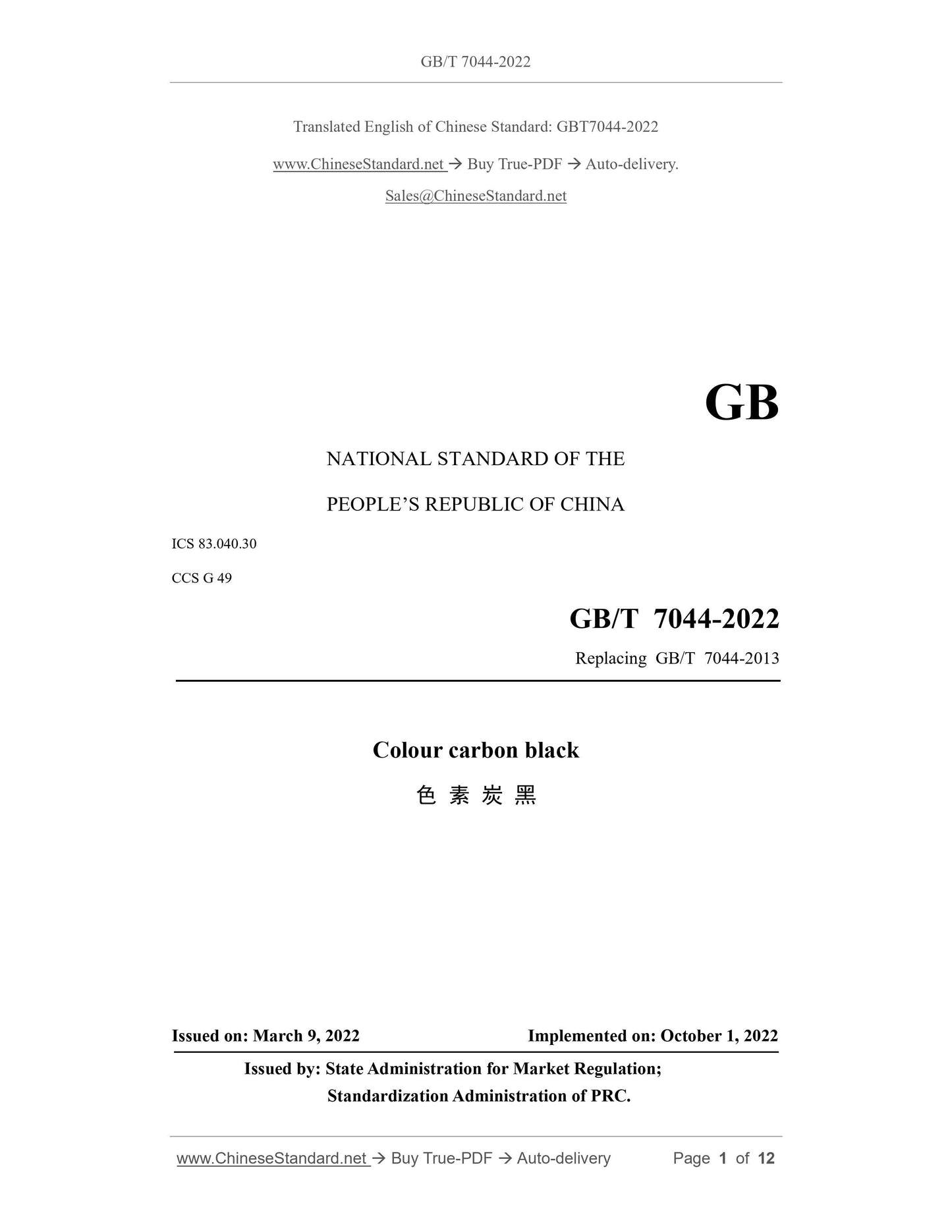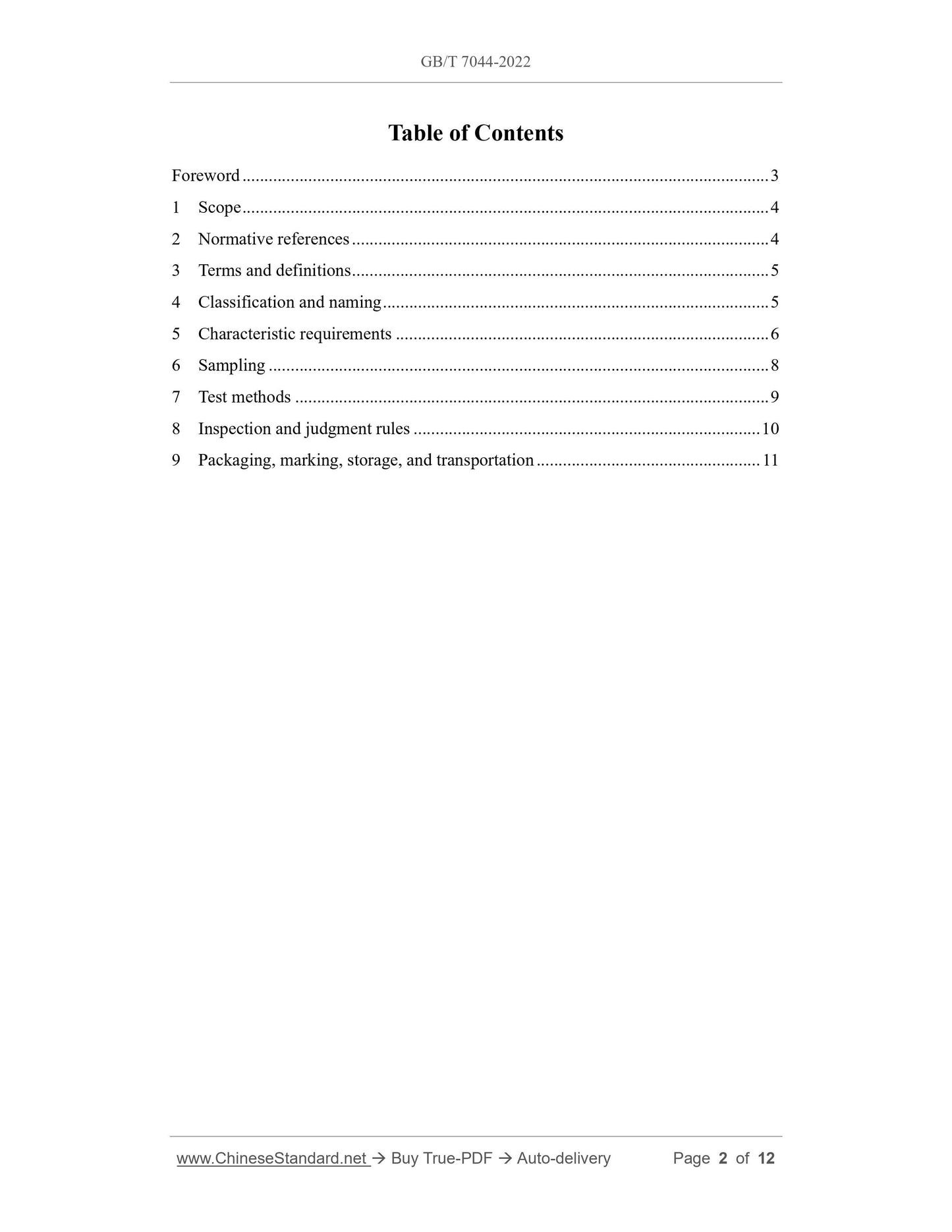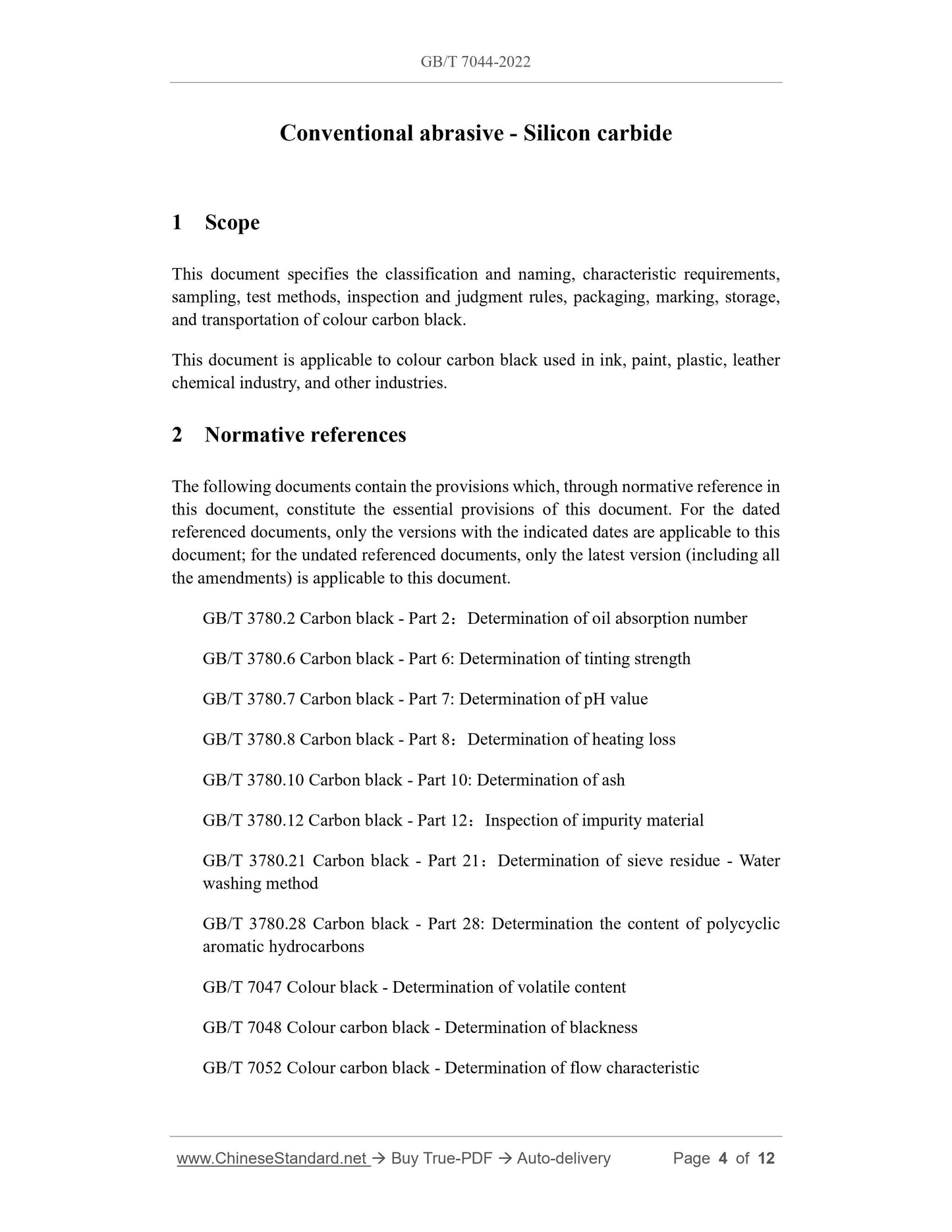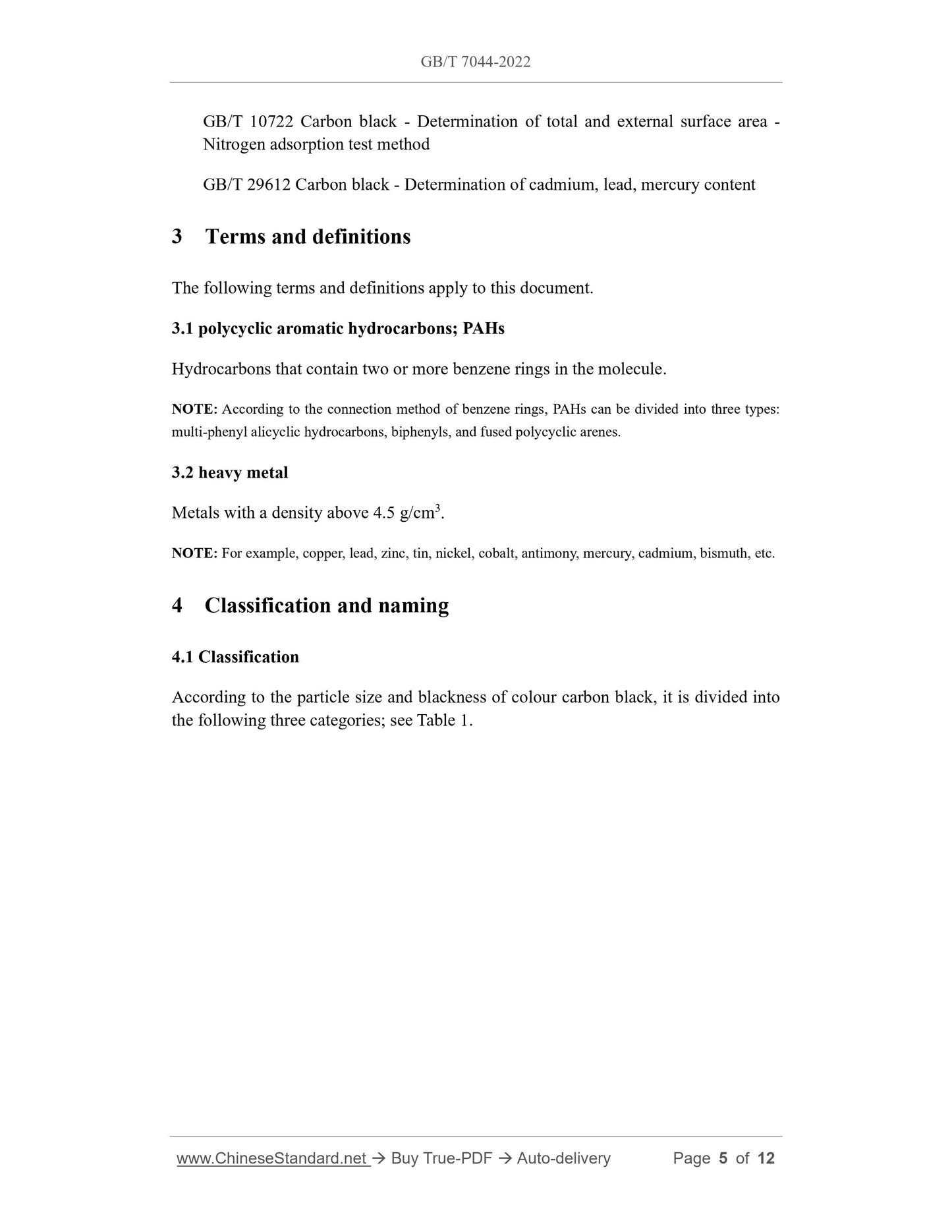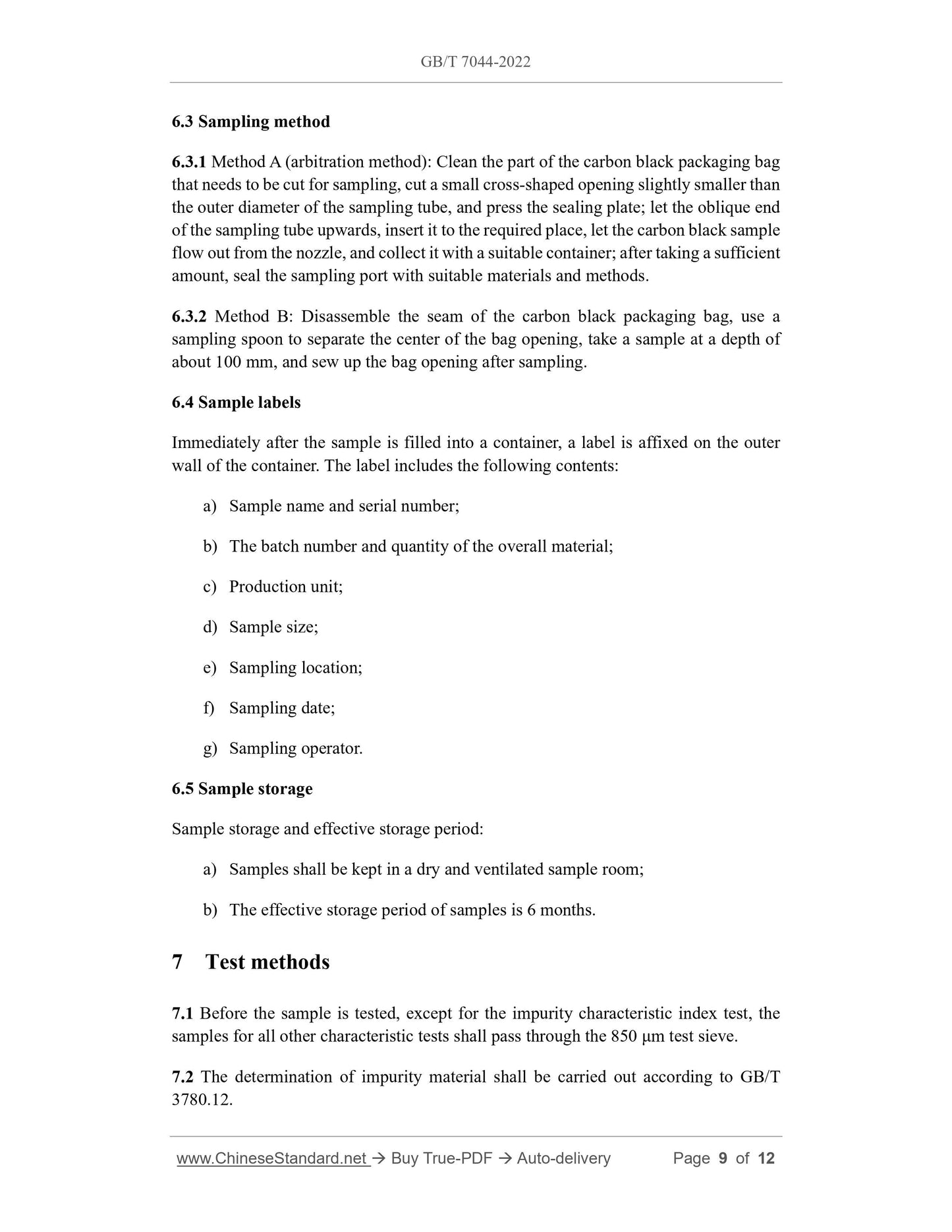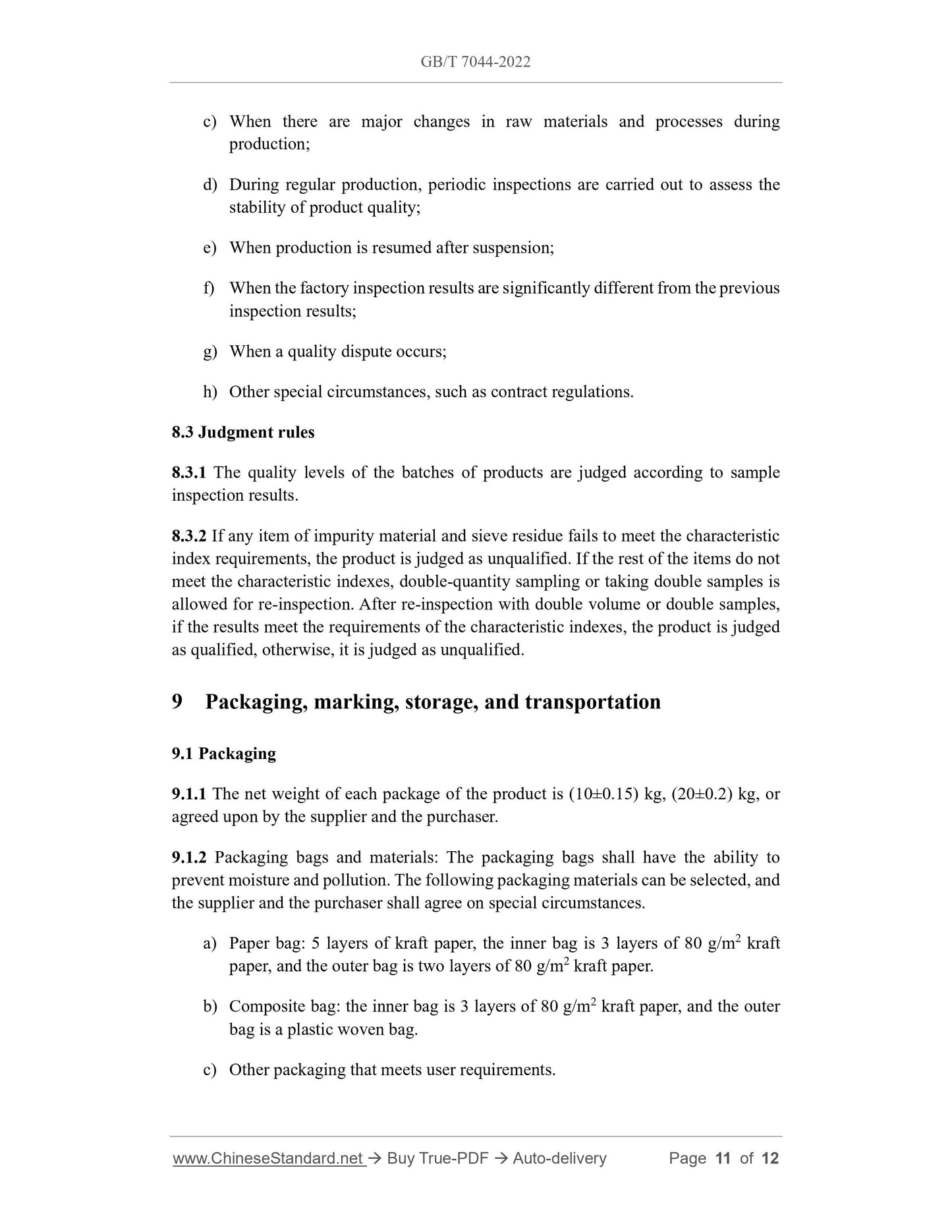1
/
of
6
www.ChineseStandard.us -- Field Test Asia Pte. Ltd.
GB/T 7044-2022 English PDF (GB/T7044-2022)
GB/T 7044-2022 English PDF (GB/T7044-2022)
Regular price
$125.00
Regular price
Sale price
$125.00
Unit price
/
per
Shipping calculated at checkout.
Couldn't load pickup availability
GB/T 7044-2022: Colour carbon black
Delivery: 9 seconds. Download (and Email) true-PDF + Invoice.Get Quotation: Click GB/T 7044-2022 (Self-service in 1-minute)
Newer / historical versions: GB/T 7044-2022
Preview True-PDF
Scope
This document specifies the classification and naming, characteristic requirements,sampling, test methods, inspection and judgment rules, packaging, marking, storage,
and transportation of colour carbon black.
This document is applicable to colour carbon black used in ink, paint, plastic, leather
chemical industry, and other industries.
Basic Data
| Standard ID | GB/T 7044-2022 (GB/T7044-2022) |
| Description (Translated English) | Colour carbon black |
| Sector / Industry | National Standard (Recommended) |
| Classification of Chinese Standard | G49 |
| Word Count Estimation | 9,981 |
| Issuing agency(ies) | State Administration for Market Regulation, China National Standardization Administration |
Share
